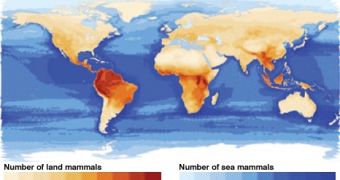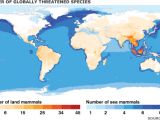The state of Earth's wildlife is bleak at best, say researchers. More than 50 percent of all mammal species are endangered and a quarter of them are in immediate danger and face extinction. Out of the 5,487 mammals studied in this year's edition of the Red Book, a publication that keeps track of the danger levels on all animals worldwide, more than 1140 are going to completely disappear during our lifetime.
The statistics are frightening and ecologists are warning that human activities are the main cause for this decline. According to them, reduction of habitats, hunting and deforestation are the main causes that determine animals to retreat even further into the forest or to come out in the plains, where they are inevitably hunted down. This is especially true in the case of felines, which are looked upon with prejudice and fear and are thought to be extremely dangerous.
Amphibious populations around the globe are also dying, with an estimated third of them facing immediate extinction. The situation is especially dire in areas close to the tropics, such as the northern regions of Southern America and wide areas in central and south-east Asia. Julia Marton-Lefevre, director-general of the International Union for the Conservation of Nature (IUCN) says that carefully-planned measures worldwide could decrease the rate at which habitats are currently lost. "The financial concerns of your times should not come ahead of the environment," the Red Book states.
While for some species it may already be too late, for others there is still a chance of survival and scientists are willing to do whatever it takes to support our planet's biodiversity. As an example, strict hunting regulations placed on African elephants have determined a steady increase in their population, which is now clearly recovering. Similar measures have to be employed in other countries as well, in order for them to have any effect whatsoever.
The Zoological Society of London also has a plan to create a population sample of all animals currently alive on Earth, so as to be able to study the exact rate at which numbers decline when influenced by various factors. They also plan to include marine animals in it, as facts in the Red Book show that more than 79 percent of them are facing extinction due to intensive fishing and entanglement in nets worldwide. This is the leading cause of death in dolphins and whales, besides pollution.
If the proper actions are not taken immediately, it may be possible for humans to witness the disappearance of species that have been around longer than we have. And while some may say that it is natural selection, it's actually not. By introducing unnatural factors into the atmospheric "equation," such as smoke, pollution and deforestation, humans have, intentionally or not, set the perfect death trap for most of our planet's animal and plant species.

 14 DAY TRIAL //
14 DAY TRIAL // 
